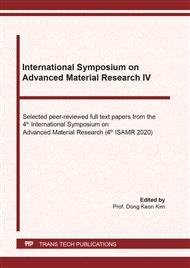p.1
p.7
p.13
p.18
p.24
p.30
p.35
p.41
Optimum Composition of Aluminium Hybrid Composites for Maximum Wear Resistance
Abstract:
Taguchi method is applied to optimize the compositions of Al-Mg-Ti-Cu-SiC hybrid composites for maximum wear resistance. Wear tests are performed on a pin-on-disc machine under a constant load of 3 kg on specimens of above composites prepared using Taguchi L9 orthogonal array through stir casting route. Each test is conducted for 30 minutes at disc rotational speed of 600 rpm. The contribution of each constituent is evaluated using ANOVA. Linear and quadratic regression models are also developed. The predicted results by these models are very close to the experimental results. It is found that Taguchi method is very successful in the optimization of particulate reinforcements (Mg, Ti, Cu and SiC) in the composites for maximum wear resistance.
Info:
Periodical:
Pages:
18-23
Citation:
Online since:
June 2021
Authors:
Keywords:
Price:
Сopyright:
© 2021 Trans Tech Publications Ltd. All Rights Reserved
Share:
Citation:


